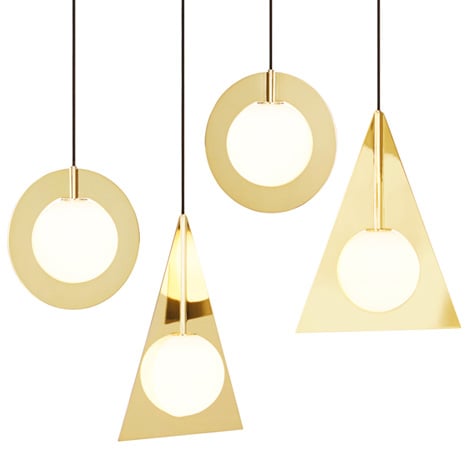
"Nostalgic comfort" brings brass back into contemporary design
Feature: the warmth of brass has made it "metal of choice" for today's designers, who showed products in the material on both sides of the Atlantic this month, finds Dezeen style editor Dan Howarth.
A strong recent show of support for brass has made it abundantly clear that the golden metal is back in favour – particularly with lighting designers. "There has been a great use of brass over the past few years – there's definitely a trend," says Paul de Zwart, founder of UK brand Another Country. "Brass is probably the metal of choice."
This month's Clerkenwell Design Week and New York design week introduced a wave of new brass creations that have taken the material away from its heritage associations.

At Clerkenwell in London, Another Country showed a range of lighting that included a chandelier made from brass rods and pendants formed from brass disks, designed by US studio Workstead.
"The reason we like brass is that it's a very warm metal, especially when its been brushed," says De Zwart.
The brand also uses brass details to compliment it's oak furniture. "It has a textural quality that works with oak, particularly for a domestic setting."

Brass is a highly malleable metal alloy formed by combining zinc and copper, with a relatively low melting point that allows it to be moulded easily into any shape. These properties have made it a popular choice for musical instrument makers and have helped it find favour with designers like London-based Tom Dixon.
Though Dixon has been using the metal for over three decades in his work, he acknowledges there has been a recent revival in the visibility of both brass and copper in industrial design.
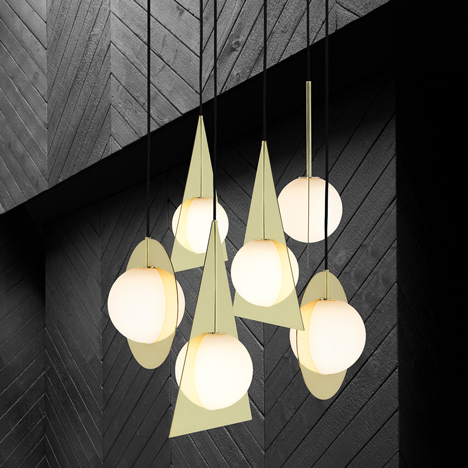
"It's recent fashionability is probably a nostalgic comfort and a reaction to the harder chrome and aluminium that are so familiar in contemporary design," Dixon told Dezeen.
"I have been using brass and copper since I learnt to weld in the early eighties – the brazing rods you use in oxy-acetylene welding are made from brass and I would overstate the weld as a kind of basic decoration," says Dixon.
Dixon created some of his most iconic designs in the metal, including the Void, Mirror Ball and Beat pendant lights, and his Ecletic homeware range.
More recently, he has designed a collection of pendant and table lights that combine geometric brass-plated planes with spherical glass shades and a range of brass home accessories based on cogs.
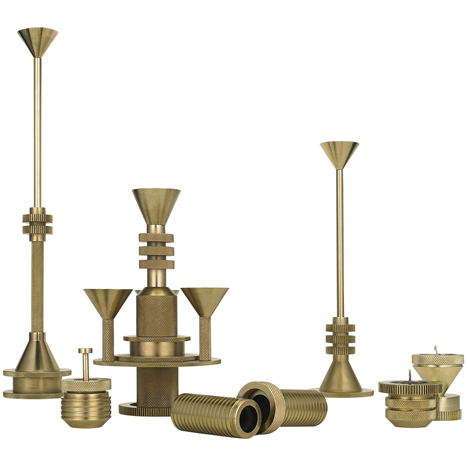
Dixon admires how the qualities of both brass and copper change over time and its ability to be moulded into any shape.
"They are great metals from the perspective of ductility and also have a living quality about them - meaning that they change with age and use so the material becomes warmer as it gets older," says Dixon. "It's used extensively in sculpture because it flows so well into moulds."
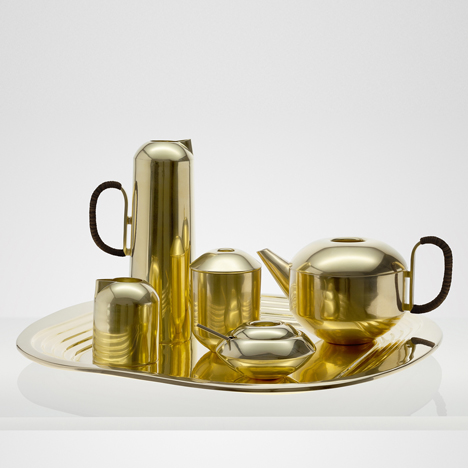
Ex-Established & Sons design director Mark Holmes chose brass as one of two metals to launch the first piece of furniture by his homewares brand Minimalux earlier this month.
The Hash shelving unit is made of 33 non-laquered brass bars which create a grid of open shelves.
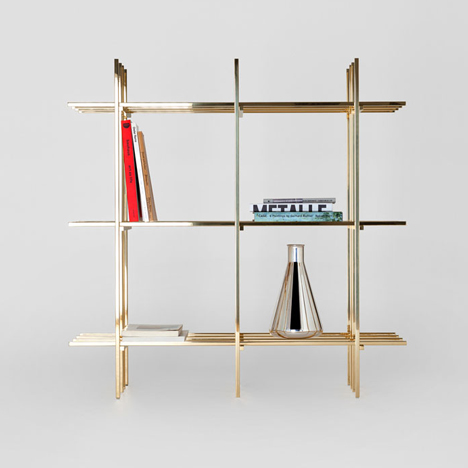
"Brass has never gone away but there's definitely been a resurgence in popularity over recent years," say Holmes and Minimalux co-director Tamara Caspersz.
"Solid non-lacquered brass is a material that ages beautifully to create a rich natural patina but it also has the capacity to be brought back to life and returned to a bright polished shine."
"Part of the attraction in this is the idea that if it is nurtured and taken care of it will last forever - a refreshing concept in this day and age and our present throw-away culture."
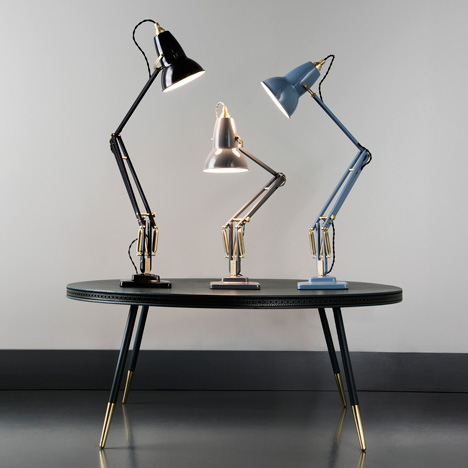
Other companies are updating iconic designs with the material. At Clerkenwell, Anglepoise released a range of it's Original1227 Lamp with its stainless steel fittings replaced with brass.
"We're looking for ways to broaden he appeal of the Original1227 lamp," says product manager Ed Lanwarne. "We were very aware that people are very into honesty of materials, and brass is perfect for that.
"With brass particularly, it's look and feel is very warm and it feels homely," Lanwarne adds. "Because it's got that gold tone, it's got that luxurious feel as well."
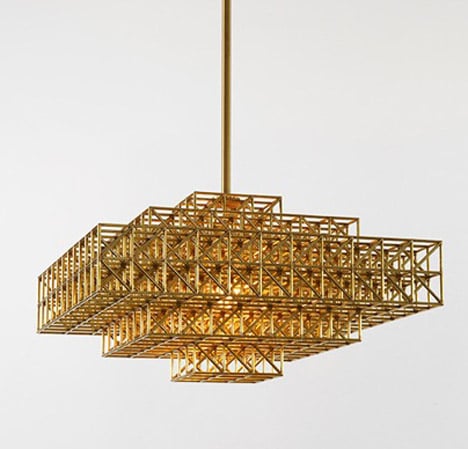
Across the pond, new brass pieces were exhibited around New York during the city's design week earlier this month.
A particular highlight was US lighting brand Roll & Hill's brass-dominated collection, including the Philippe Malouin-designed Gridlock lamps framed of three-dimensional grids of brass sticks and lights by Paul Loebach that were modelled on brass musical instruments.
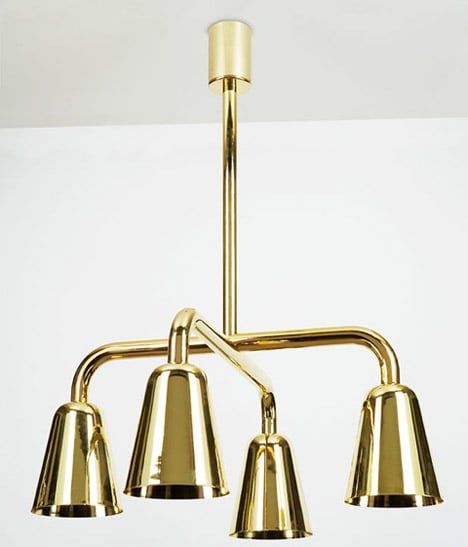
Architects are also increasingly turning to brass. British architect David Chipperfield recently won a competition to design a new home for the Nobel Prize organisation with a shimmering brass-clad building on Stockholm's waterfront, while Danish studio BBP Arkitekter converted a 1960s building in Copenhagen into a new headquarters for a jewellery firm in Copenhagen, wrapping it in a layer of perforated brass.
But, while brass can be left to weather naturally on a building, its appeal for industrial designers is tempered slightly by its tendency to tarnish and stain.
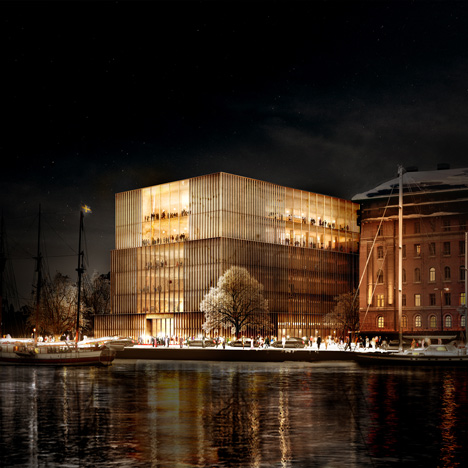
De Zwart finds the metal's pliant attributes a challenge when trying to keep surfaces looking as intended.
"It has it's limitations," said De Zwart. "It's not the easiest metal to work with because it stains easily, it marks easily, it leaves a lot of machine marks."
"It's a soft metal, so when we use it for screw fixings you have to be very careful," he said. "If you take a hard stainless steel screwdriver to a brass screw you can damage it."
Despite these challenges, young designers are joining more experienced brands in experimenting with the metal, finding new applications for the metal by combining old techniques with new technologies.
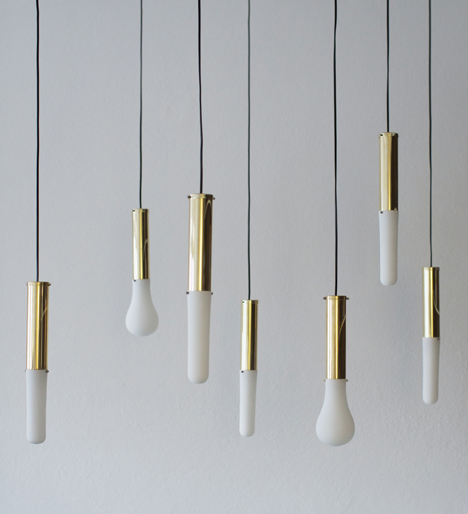
Stockholm-based designer Hanieh Heidarabadi premiered brass fixtures that hold 3D-printed shades that can be custom-made in any shape at Clerkenwell.
"I made the brass tubes with a maker in Stockholm – he usually makes trumpets and saxophones. I like the way that you can use techniques and materials you wouldn't normally think of," explains Heidarabadi.
"I like the mix between craftsmanship and technology."
More from Clerkenwell Design Week | More from New York design week